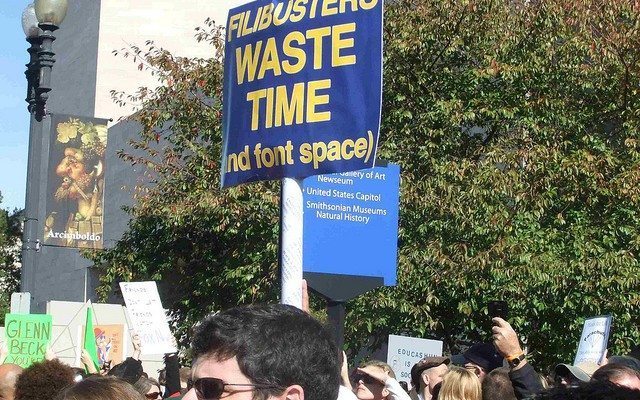
News
Filibusters: Past, Present, and Future
In a recent speech at the Center for American Progress, Senator Harry Reid shared his belief that the use of the filibuster has become an abused and exploited status quo in the Senate. He stated, “I love the Senate. But right now, the Senate is broken and needs to be fixed.”
The reason is simple: since the mid 1900s, the filibuster has been abused as a powerful tool to halt legislation. Essentially, if a Senator does not like the legislation, the wrath of the filibuster is relinquished.
Just look at Congress’s approval ratings. You know there is problem when the so-called “Do Little Congress” of 1947-1948 passed more legislation than 112th & 113th Congresses. While some blame this on party polarization, which is partly true, it really boils down to is the abusive nature of the filibuster.
I think it is safe to say that the general public absolutely despises the filibuster. But the filibuster was once a strategic tool that improved the democratic process.
When the filibuster was used in the “unwritten constitution” during the 1850s, it was intended to function as a means to give the minority party a voice. Essentially, a senator would be able to stop a piece of legislation, discuss it, reform it, or get rid of it entirely. From 1800s to the early 1900s the filibuster was rarely used–only utilized in dire situations with significant legislation. One notable use of the filibuster took place in 1841 when Senator William King successfully filibustered Senator Henry Clay’s attempt to recharter the national bank. Yet when looking at the present, it is clear that use of the filibuster has changed significantly since its inception.
In the early 1970’s, the filibuster took a turn for the worst, when Senator Mike Mansfield and Senator Robert Byrd introduced a new legislative process that allowed the Senate to “multi-task” during a filibuster. It was contingent on the ability to work on two tracks: a senator can filibuster legislation on one track, while the Senate as a whole functions as usual on the other track. In theory, this would improve the efficiency of Congress. Instead, the ability to threaten a filibuster, sometimes referred to as a “silent filibuster” was born.
Since that drastic change to the senate legislative process, the filibuster has become a negative trend, resulting in an unproductive congress and a disgruntled American populace. This poses the question; where is the change?
Senate Majority leader Harry Reid expressed the necessity for reform, proposing that the Senate would change the rules to require a simple majority vote to advance executive nominees, contrasting with the current 60-vote threshold. This was expressed in his nuclear option, quoted in Politico. “This is a moment in history when circumstances dictate the need for change” Reid said at the Center for American Progress. Thanks for realizing this Senator Reid. It’s better late than never.
[Huffingtonpost] [Washingtonpost] [Politico]
—
Featured image courtesy of [Martha Soukup via Flickr]








Comments